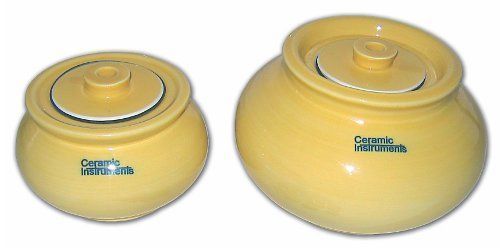NEW OGLUM JARS FOR RAPID MILLS
11/01/2013
This work reports the results of a study focused on the development of a new ceramic composition (OGLUM) for laboratory milling jars in order to obtain a low Al release compared to traditional porcelain jars.
The laboratory milling jars are used to grind materials into extremely fine powder, find application in different industries as mineral, paints, pyrotechnics, and ceramics. As a function of the application different kind of materials are used for the jars for example: porcelain, agate, carbide and silicon carbide. Some requirements are based on the fact that some pollution derived will be in the finished product, or the color of the finished product; others are based in how the jar body will react with the material being ground.
In some industries the low pollution is important, in this case it is necessary to select suitable materials for the milling jar and media. They may be with high hardness and chemical stability in order to avoid the release of undesidered elements.
Porcelain jars with high density alumina media (90–95% alumina) are widely used in the ceramic industry to grind clay bodies, frits, glazes and other raw materials with high milling efficiency, but with the disadvantage of the Al release while using Agate the Al release decrease.
The research compared the performance of new composition jar versus to porcelain and agate jars through milling tests. A common ceramic raw material was wet-ground at three times (30, 60 and 120 min), the two fractions were separated by centrifugation. On the solid fraction was checked the particle size distribution using a laser particle-size analyser while on the liquid fraction was measured the Al concentration. The results obtained highlighted that the OGLUM jars permits reduce the Al pollution into the material to grind at the levels of agate jars with the milling efficiency of porcelain jars.
This fact constitutes a valid alternative to the very expensive agate, steatite, tungsten, carbide and silicon carbide jars.
This new composition jar it is particularly suggested for laboratories dedicated to the control quality in ceramic, pharmaceutical and food industries.

